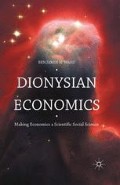Abstract
Finance—that’s about stocks and bonds and what banks do, like take deposits and make loans, right? Well that’s the way it used to be, but things have changed a lot since the days when bankers wore white shoes and came from Princeton. New financial products have been developed, especially those called derivatives, new institutions have emerged, especially hedge funds, old institutions have been transformed, especially full-service banks. Alongside these changes there has been a tremendous speeding up of all the operations of the financial system. Given all these quite basic changes in the way the financial system operates, it’s hardly surprising that there have been some growing pains.1
Access this chapter
Tax calculation will be finalised at checkout
Purchases are for personal use only
Preview
Unable to display preview. Download preview PDF.
Notes
Franco Modigliani and M. Miller, “The Cost of Capital, Corporation Finance, and the Theory of Investment,” American Economic Review 48 (1958): 261–97.
I had less contact with academic quants and none with the “pure” Wall Streeters. Emanuel Derman, My Life as a Quant (New York: Wiley, 2004),
and Gary B. Gorton, Slapped by the Invisible Hand, the Panic of 2007 (Oxford: Oxford University Press, 2010) are especially insightful.
Philip Mirowski, Machine Dreams, Economics becomes a Cyborg Science (Cambridge: Cambridge University, 2002) emphasizes the effect of war work on attitudes toward economic control.
A similar notion to the paragraph in the text is in Benjamin Ward, What’s Wrong with Economics (New York: Basic Books, 1972), 47.
The following account of finance and its theories has profited greatly by pairing the textbook on finance theory for would-be practitioners written by Paul Wilmott, Paul Wilmott Introduces Quantitative Finance, 2nd ed. (Hoboken: Wiley, 2007) and the integrated treatment of the heart of mathematical finance in
Darrell Duffie, Dynamic Asset Pricing Theory, 3rd ed. (Princeton: Princeton University Press, 2001).
Duffie (2001), p. xiii, says that his work is built around three concepts: arbitrage-free, optimality, and equilibrium. Arbitrage-free implies that short sales are feasible and is assured if preferences are reasonably well behaved. See Andrew Mas-Colell, Michael Whinston, and Jerry Green, Microeconomic Theory (New York: Oxford University Press, 1995), 702.
L. Laloux, P. Cizeau, J. P. Bouchaud, and M. Potters, “Noise Dressing of Financial Correlations Matrices,” Physical Review Letters 83, no. 7 (1999): 1467.
Darrell Duffle, How Big Banks Fail and What to Do about It (Princeton, NJ: Princeton University Press, 2011) provides an excellent account of the big banks’ role in the crisis.
Copyright information
© 2016 Benjamin Ward
About this chapter
Cite this chapter
Ward, B. (2016). Finance: It Works—but How?. In: Dionysian Economics. Palgrave Macmillan, New York. https://doi.org/10.1057/9781137597366_8
Download citation
DOI: https://doi.org/10.1057/9781137597366_8
Publisher Name: Palgrave Macmillan, New York
Print ISBN: 978-1-137-59735-9
Online ISBN: 978-1-137-59736-6
eBook Packages: Economics and FinanceEconomics and Finance (R0)

